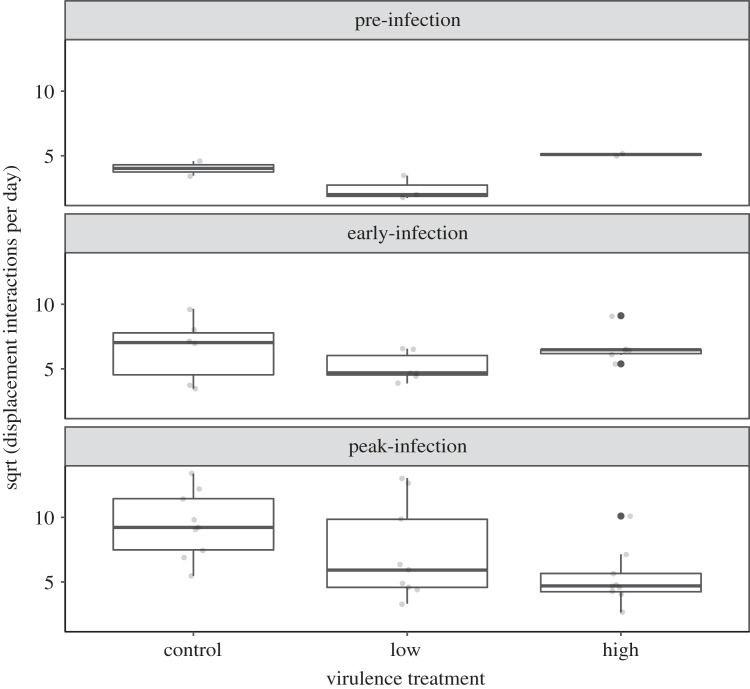Figure 5.
Index house finches inoculated with one of three treatments (control, low-virulence strain or high-virulence strain of M. gallisepticum) varied in the number of displacement interactions they had per day with flockmates over time (n = 52 daily values from 9 unique birds). There were no pairwise differences among treatments for any time period, but index birds in the control and low-virulence treatments showed significant changes over time (i.e. across panels), while high-virulence index birds did not. Each data point (jittered for visualization) represents a single daily sum of displacements (square root transformed to meet assumptions of linear mixed models), quantified via Radio Frequency Identification Device (see Methods); non-independence among individuals was controlled for in the analysis by including bird ID as random effect. Box plots represent the median (dark line), 25% quartile (lower line) and 75% quartile (upper line).

